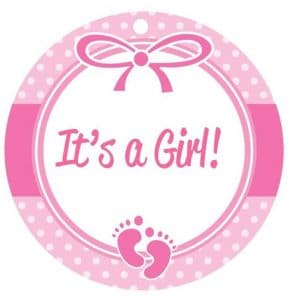 On this day in history, Sunday 7th September 1533, at 3 o’clock in the afternoon, Queen Anne Boleyn gave birth to a baby girl at Greenwich Palace.
On this day in history, Sunday 7th September 1533, at 3 o’clock in the afternoon, Queen Anne Boleyn gave birth to a baby girl at Greenwich Palace.
Although the birth of a daughter instead of the predicted prince must have been a disappointment initially, both her parents delighted in their daughter. Of course, nobody could have known that this little girl, who was baptised “Elizabeth”, would one day rule over England for over forty-fours years and would go down in history as the Virgin Queen, Gloriana and Good Queen Bess, the iconic Elizabeth I.
Edward Hall records Elizabeth I’s birth in his chronicle:
“The. vii. day of September beyng Sondaie, betwene thre and foure of the Clocke at after noone, the Quene was deliuered of a fare Lady, whiche daie the Duke of Norffolke came home to the christenyng, & for the Queues good deliueraunce, Te deum was song in continently, & great preparacion was made for the christenyng […]”
Charles Wriothesley records in his chronicle:
“Memorandum, the viith daie of September, 1533, being Sondaie, Queen Anne was brought to bedd of a faire daughter at three of the clocke in the after noune; and the morrowe after, being the daie of the Nativities of Oure Ladie, Te Deum was songe solempnlie at Powles [St Paul’s], the Major [Mayor] being present with the head craftes of the Cittie of London.”
Eustace Chapuys, the imperial ambassador, also records Elizabeth’s birth in a letter to Emperor Charles V:
“On Sunday last, on the eve of Lady Day, about 3 o’clock in the afternoon, the Queen’s mistress was delivered of a girl, to the great disappointment and sorrow of the King, of the Lady herself, and of others of her party, and to the great shame and confusion of physicians, astrologers, wizards, and witches, all of whom affirmed that it would be a boy. The people in general have rejoiced at the discomfiture of those who attach faith to such divinations, and who, whatever face they may put on the present occasion, are nevertheless exceedingly affected and ashamed.
The Lord Mayor and aldermen of this city, the heads of guilds, and other citizens of note have been invited to the christening, as well as the two French ambassadors. The new-born is to be christened at Greynuich (Greenwich). The godmothers will be the mother-in-law to the duke of Norfolk and the marchioness of Exeter; the archbishop of Canterbury to hold the child at the font, and the bishop of London to christen her. She is to be called Mary as the Princess: which title, as I have been informed from various quarters, will be taken away from its true and legitimate owner, and given to this spurious daughter of the King. If so we shall soon hear.”
Henry and Anne were bound to have been disappointed because a prince had been predicted, but there is no evidence of “great disappointment and sorrow”. The celebratory jousts planned for the birth of the expected prince were cancelled, but it was traditional for the celebrations for the birth of a princess to be low-key. A herald proclaimed the good news, Te Deums were sung and the royal couple got on with planning Elizabeth’s lavish christening. Anne Boleyn had given birth to a healthy baby, there was much to celebrate for a prince would surely follow, wouldn’t he?
Notes and Sources
- Hall, Edward (1809) Hall’s chronicle : containing the history of England, during the reign of Henry the Fourth, and the succeeding monarchs, to the end of the reign of Henry the Eighth, in which are particularly described the manners and customs of those periods. Carefully collated with the editions of 1548 and 1550, Printed for J. Johnson, p. 805.
- Wriothesley, Charles (1875-77) A chronicle of England during the reigns of the Tudors, from A.D. 1485 to 1559, Volume 1, Printed for the Camden Society, p. 22
- ‘Spain: September 1533, 1-15’, in Calendar of State Papers, Spain, Volume 4 Part 2, 1531-1533, ed. Pascual de Gayangos (London, 1882), pp. 787-800. British History Online http://www.british-history.ac.uk/cal-state-papers/spain/vol4/no2/pp787-800.